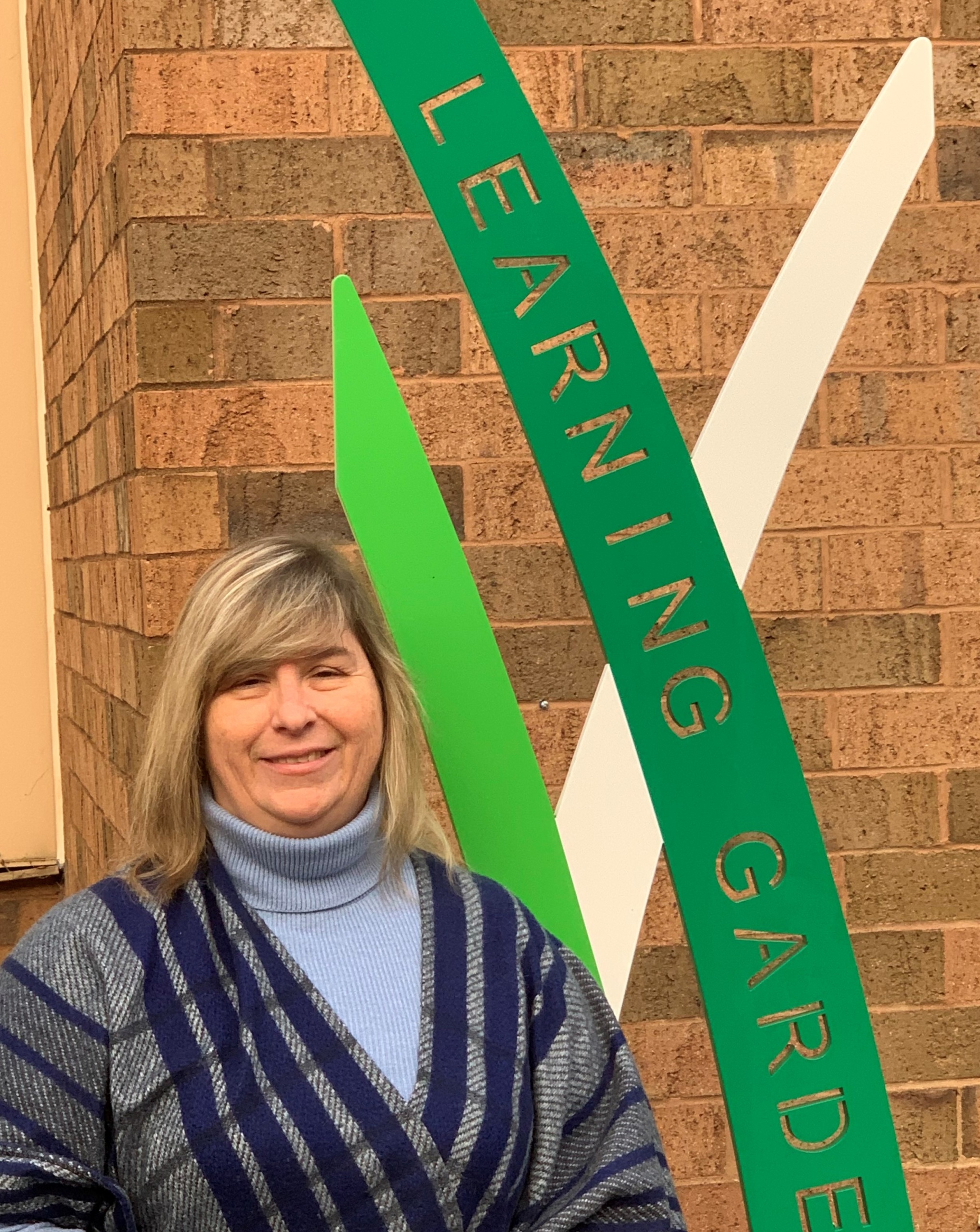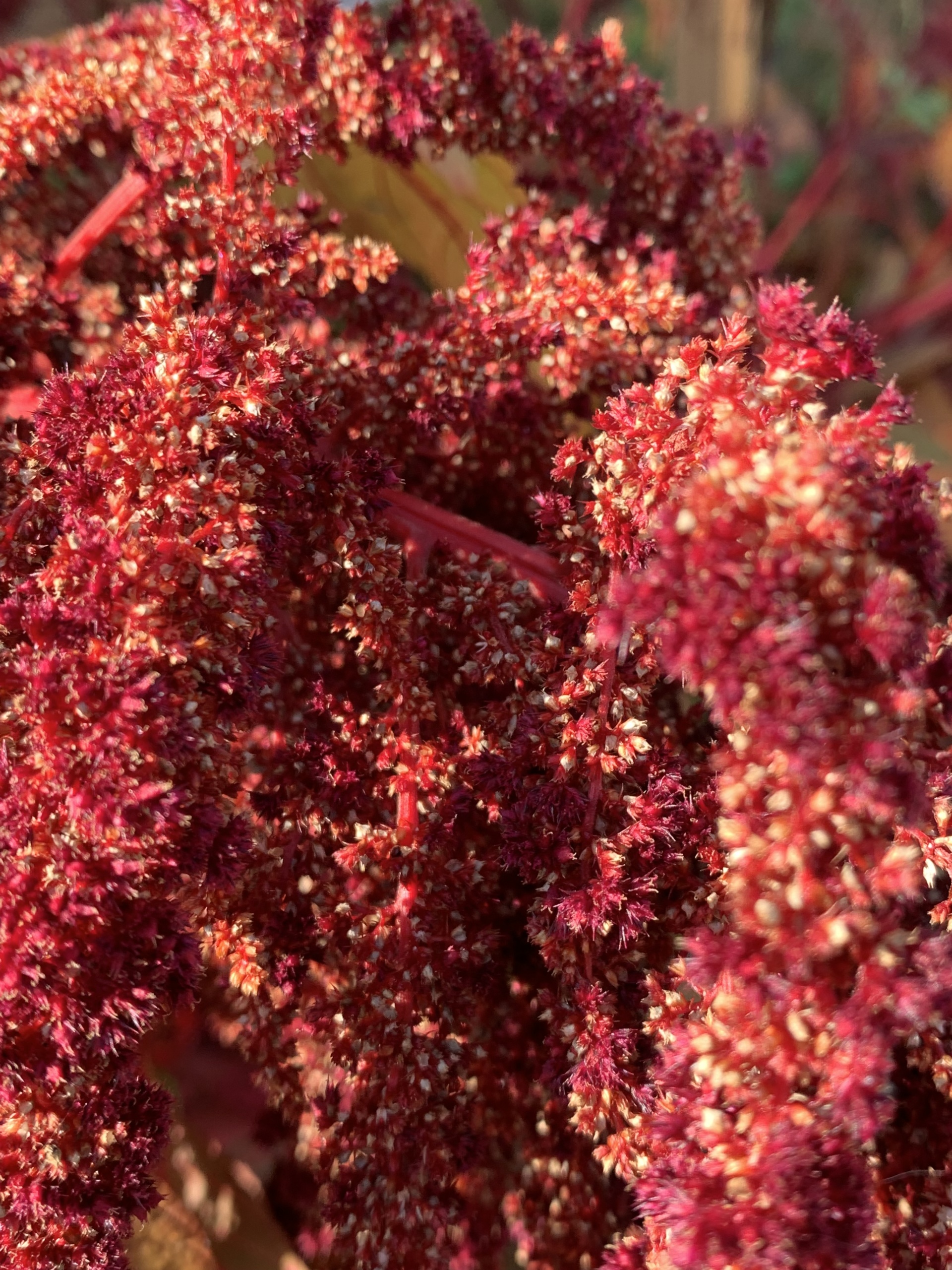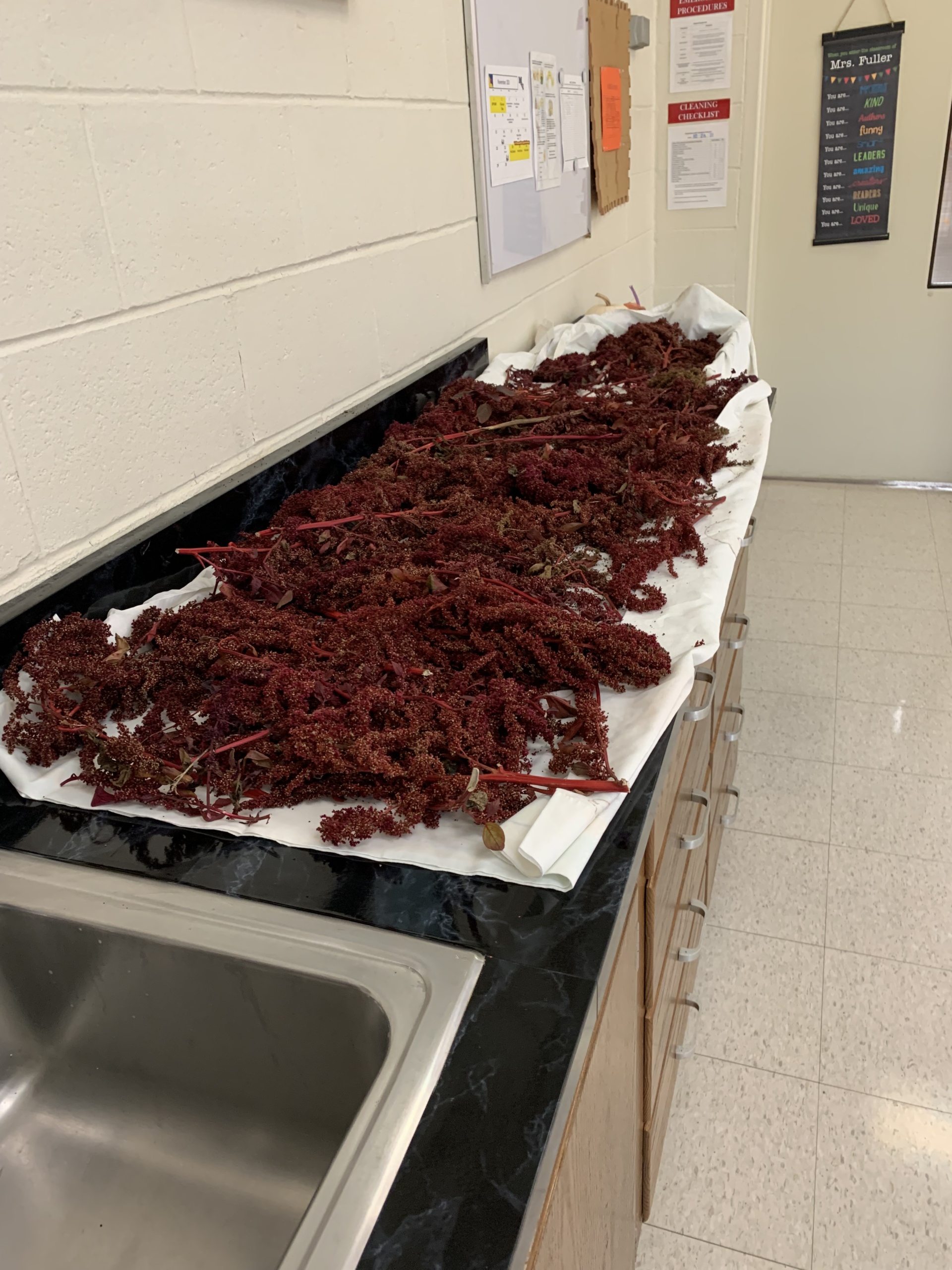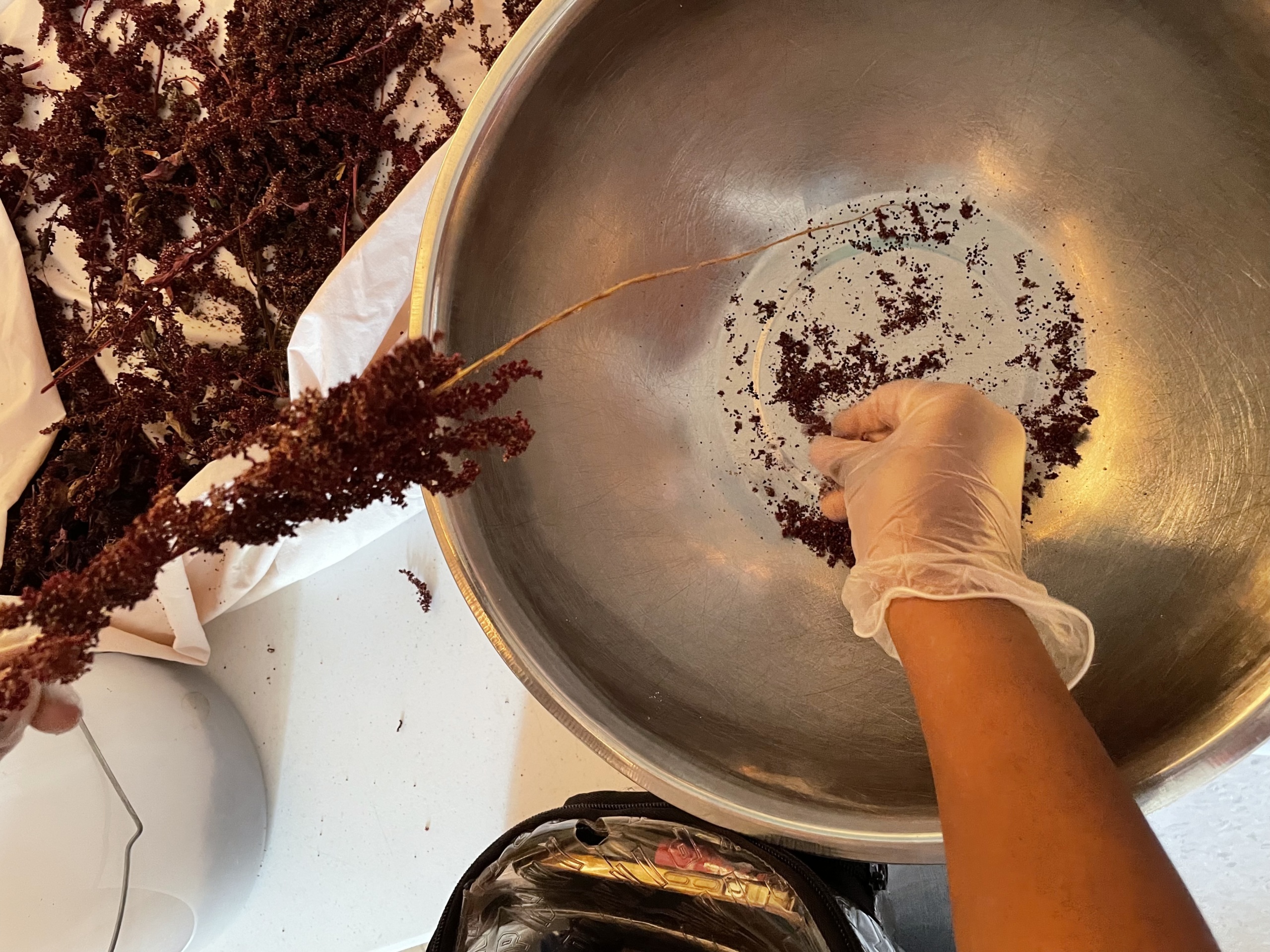In this month’s Grower’s Spotlight, we are featuring Lisa Fuller. Lisa is a secondary autistic support teacher at the Mon Valley School. Mon Valley is one of the three Allegheny Intermediate Unit (AIU) district schools in the county and is part of Grow Pittsburgh’s School Gardens Program. AIU schools are public, non-residential specialized schools for students ages 5-21 whose needs are not fully met in their own school district settings. AIU schools provide more specialized care in terms of accessibility, classroom resources, and nurses/mental health professionals to support students. Teachers and staff at Mon Valley School see their garden as both a valuable learning resource and mental health asset.

Grow Pittsburgh: In what ways do you think having a school garden has had an impact on your students?
Lisa: Every time I take my students out to the garden, they seem amazed at what is out there. Too few of the students at Mon Valley have grown up with a garden to enjoy. They love to smell the herbs and to taste the ripe tomatoes right off the vine. We talk about what we would like to see in the garden and what we should plant. It becomes a good opportunity for dialogue and an exercise in planning to achieve a result. They are learning how food is grown, how it is prepared, and that it doesn’t just appear in the supermarket.
GP: What has your partnership with Grow Pittsburgh meant for your program?
Lisa: Our partnership with Grow Pittsburgh helps to maintain a focus on our school garden, as well as to provide new ideas on ways to use it as an educational medium. We look forward to visits from Farmer Redding who helps us to prepare the soil and plant wonderful things. The raised beds that have made our garden look good and serve a more important purpose in that they make it more accessible for our physically handicapped students to get their hands into the soil, to smell the herbs, and feel the texture of the leaves of the plants we are growing.
Mon Valley School has had a garden since 2013 and really got involved with Grow Pittsburgh in 2016 when they added the raised beds to the school garden. My colleague, Cathy Scott, got me involved with the garden club at Mon Valley School, which introduced me to Grow Pittsburgh. I have attended a few Grow Pittsburgh webinars, as I have become more involved with the garden. I love the sharing of ideas about the gardens in the webinars and learning what other school gardens are doing through Grow Pittsburgh.
GP: What are some things that you have learned by using the garden as a teaching space?
Lisa: Having a school garden means you need to take into consideration our breaks in the school year, and the fact that no one is there to tend it on the weekends. Not everything works with that schedule. If you don’t pay attention you may miss what you have been looking forward to. You may be waiting for something to become ripe but can’t get to the garden for a few days. When you return the fruit is overripe and rotting. This can happen very easily in a school garden. So, we are trying to get better at planning what and when we should plant so we will be around to enjoy them at their peak. Also, having many people that can help maintain and harvest the garden is very important.
GP: How do you hope to grow this space and the program in the coming years?
Lisa: Part of my approach to school gardening is to teach about the familiar, but also to introduce my students to new things. In the next year, I am hoping to grow luffa so that we can make gifts to sell as a fundraiser for the garden. I would also like to plant several different berry bushes such as sea buckthorn, jostaberries, and honeyberries. I have also been looking at growing espalier fruit trees. This would keep the fruit easy to harvest and add interest to the garden.
GP: How long have you personally been growing food and how did you learn?
Lisa: I have been growing food off and on for many years. My granddad always had a garden, and I would help with planting and care. I enjoyed going to the garden to pick whatever was ripe at the time. Lettuce, spinach, and asparagus in the spring, then in the summer the tomatoes, corn, beans, and zucchini. The fall meant digging up potatoes, carrots, onions, and beets. My granddad also grew berries, fruit trees, grapes, and kept bees. There was always something to do in the garden. I enjoyed helping my grandma prepare and canning the food we harvested.
GP: What’s your favorite thing to grow?
Lisa: Things I like to grow most are herbs, tomatoes, and flowers. I have a stone wishing well outside the kitchen door that serves as the container for my herb garden.
GP: What’s the best piece of advice you could give to someone new to growing?
Lisa: The best advice I can give someone new to gardening is to try things and be patient. Something will grow. If it doesn’t, don’t be afraid to keep trying and ask people what they do to have success in their garden.
Amaranth from the School Garden
Lisa and her students used the Amaranth, shown in the photos below, from the school garden to make a chocolate treat combining milk chocolate and popped amaranth. Check out the recipe for Midnight Snack from greenhealthycooking.com, that Lisa used as inspiration!

Amaranth plant in the Garden

Amaranth drying on the counter

Student separating the amaranth seeds
Amaranth Chocolate Recipe
Prep Time: 5 minutes
Cook Time: 5 minutes
Total Time: 10 minutes
Servings: 8 People
Calories: 97kcal
Ingredients:
3.5 oz 70% dark chocolate
1/3 cup popped amaranth
1/4 cup chopped roasted and peeled hazelnuts
Instructions:
1. Melt chocolate and mix with popped amaranth and chopped roasted and peeled hazelnuts.
2. Add to a parchment paper-lined freezer-proof container and spread out evenly.
3. Put in the freezer for approximately 15 minutes.
4. Take out and cut into pieces.
Notes
Alternatively, you can use white chocolate and add dried cranberries and chopped macadamia nuts as well
Do you know another local grower you’d like to see in the Grower’s Spotlight? Maybe it’s you! Drop us a line to be featured in our next newsletter or on our blog.
